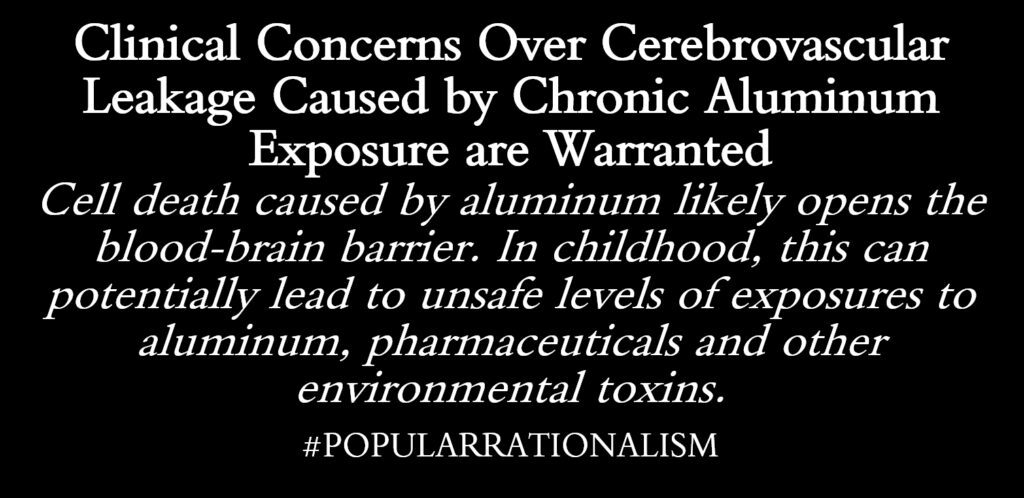Cell death caused by aluminum likely opens the blood-brain barrier. In childhood, this can potentially lead to unsafe levels of exposures to aluminum, pharmaceuticals and other environmental toxins.
by James Lyons-Weiler, PhD
Excerpt from Popular Rationalism Substack Article
The blood-brain barrier exists in the network of blood vessels that bring oxygen and nutrients to the brain. This network, made up of a network of cerebrovascular cells, can usually prevent a wide array of compounds from entering the brain. It is so effective that pharmaceutical companies have spent millions to identify drug additives that can help their product better cross the blood-brain barrier to allow them to save money in the production of pharmaceuticals that target the brain.
A recent study (Garcia et al., 2022) performed single-cell RNA-sequencing on more than 16,000 cerebrovascular cells. Using the cells’ gene-expression patterns, the researchers were able to classify them into 11 different subtypes, including endothelial cells, which line the blood vessels; mural cells, which include pericytes, found in the walls of capillaries, and smooth muscle cells, which help regulate blood pressure and flow; and fibroblasts, a type of structural cell.
All of these cells types are subject to endoplasmic reticulum stress – and for some, the resulting cell death – due to aluminum exposure. This causes cerebrovascular leaking, allowing both aluminum, pharmaceuticals, and environmental toxins to enter the brain more readily. It has been known for a long time that aluminum in various forms can attack the blood-brain barrier in a manner that is synergistic with sodium-fluoride (Varner et al., 1998). The breakdown of the BBB was identified by Gherardi et al. (2015) as a “Trojan Horse” mechanism for infectious particles, but the general mechanism as a route for increased exposure to environmental toxins is now more apparent . . .READ REST OF ARTICLE ON SUBSTACK

